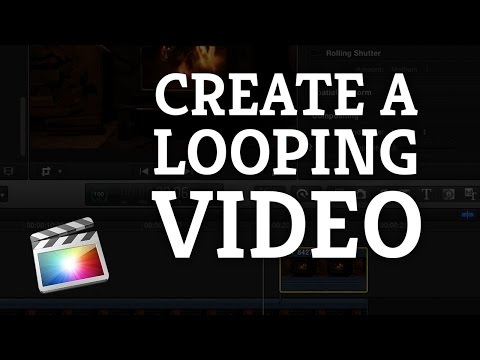Mastering Infinity: A Comprehensive Guide to Creating Video Loops in Final Cut Pro

Introduction: Video loops, also known as seamless or infinite loops, have become a popular trend in digital content creation, offering an engaging and mesmerizing viewing experience that captivates audiences across various platforms. Final Cut Pro, a versatile and powerful video editing software, provides a range of tools and features that empower creators to craft seamless video loops with precision and creativity. In this comprehensive guide, we’ll explore the intricacies of creating video loops in Final Cut Pro, unraveling techniques, workflows, and expert insights to help you master the art of looping videos effortlessly.
Understanding Video Loops: A video loop is a continuous sequence of footage that seamlessly transitions from the end back to the beginning, creating the illusion of infinite repetition. These loops are often used in digital signage, social media, websites, and multimedia installations to create dynamic and immersive visual experiences. In Final Cut Pro, video loops can be created by seamlessly blending the beginning and end frames of the footage or by using looping techniques such as ping-pong looping or crossfading transitions. By mastering the techniques and tools available in Final Cut Pro, creators can transform ordinary footage into captivating loops that mesmerize and engage viewers.
Step-by-Step Guide to Creating Video Loops in Final Cut Pro:
- Import Footage: Launch Final Cut Pro and create a new project. Import the footage you want to use for the video loop into your project media bin.
- Trim Footage: Place the footage on the timeline and trim it to the desired length for the loop. Ensure that the beginning and end frames of the footage are visually consistent to create a seamless transition between them.
- Duplicate Footage: Duplicate the trimmed footage on the timeline by selecting it and pressing Command + C to copy, then Command + V to paste. Place the duplicated footage directly adjacent to the original footage on the timeline.
- Blend Beginning and End Frames: To create a seamless transition between the beginning and end frames of the footage, use the Blade tool (B) to cut the duplicated footage at the point where it aligns with the original footage’s end frame. Delete the excess portion of the duplicated footage.
- Apply Crossfade Transition (Optional): If desired, apply a crossfade transition between the end frame of the original footage and the beginning frame of the duplicated footage. This can help smooth out any potential visual discontinuities and create a more seamless loop.
- Adjust Duration and Timing: Fine-tune the duration and timing of the loop by adjusting the placement and length of the duplicated footage on the timeline. Experiment with different loop lengths and transitions to achieve the desired effect.
- Preview Loop: Preview the loop in the Viewer or Canvas window to assess its visual continuity and smoothness. Make any necessary adjustments to the timing, transition, or placement of the footage to refine the loop further.
- Export Loop: Once you’re satisfied with the loop, export it out of Final Cut Pro to create the final video file. Go to File > Share > Master File and choose the desired export settings, format, and destination for your loop. Click Next to render and save the looped video.
Tips and Best Practices for Creating Video Loops in Final Cut Pro:
- Choose Suitable Footage: Select footage with visually consistent beginning and end frames to create a seamless loop. Avoid footage with abrupt cuts, camera movements, or changes in lighting that may disrupt the loop’s continuity.
- Experiment with Loop Length: Experiment with different loop lengths to find the optimal duration for your loop. Shorter loops are ideal for social media and online platforms, while longer loops may be suitable for digital signage or multimedia installations.
- Use Transitions Wisely: Apply transitions such as crossfades or dissolves to smooth out any potential visual discontinuities between the beginning and end frames of the loop. Be mindful not to overuse transitions, as they may distract from the seamless loop effect.
- Consider Looping Techniques: Explore different looping techniques such as ping-pong looping (reversing playback direction) or time-remapping to create unique and dynamic loop effects. Experiment with these techniques to add visual interest and variety to your loops.
- Optimize for Seamless Playback: When exporting your looped video, ensure that it seamlessly loops without any noticeable jumps or pauses. Test the loop on different devices and platforms to ensure compatibility and smooth playback.
- Seek Inspiration: Draw inspiration from other video loops and seamless animations online or in multimedia installations. Analyze their techniques and approaches to gain insights and ideas for your own loops.
Conclusion: Creating video loops in Final Cut Pro offers a versatile and creative way to engage viewers and enhance digital content across various platforms. By following the steps outlined in this comprehensive guide and incorporating tips and best practices, you’ll be well-equipped to craft seamless loops that mesmerize and captivate audiences. So, dive in, experiment fearlessly, and let your creativity soar as you master the art of looping videos in Final Cut Pro.




